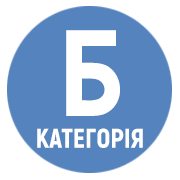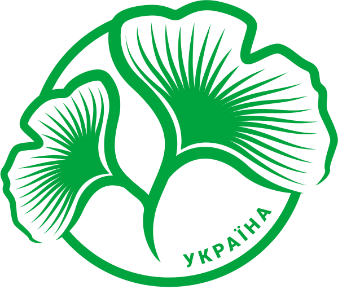For Authors
“Bulletin of Sumy National Agrarian University. The Series: Veterinary Medicine” accepts articles, which have not been published and submitted to other journals, which convey original research findings in relevant subject areas and specialties (veterinary sciences (H6 “Veterinary medicine”)).
Languages: Ukrainian and English
SUBMISSION OF MATERIALS
To publish an article in “Bulletin of Sumy National Agrarian University. The Series: Veterinary Medicine”, No. 1 (2025), you should take the following steps until April 25, 2025 (inclusively): fill in an application form at the link and send below-mentioned materials to vm@snaubulletin.com.ua:
- an article, which meets all the requirements;
- a copy of payment confirmation (an author receives payment details after passing peer-review).
Example of a file name: Ivanenko_article, Ivanenko_receipt
All materials received by the editors are subject to peer review (internal anonymous).
Articles that do not meet the below requirements and guidelines are sent back to the author(s) with recommendations for improving.
The editors reserve the right to change the article’s title, reduce it, and make editorial alterations (technical, literary and scientific editing).
Each article is assigned with DOI (digital object identifier).
The editorial staff provides the author with payment details after reviewing the article and approving it for publication.
The publication fee is 800 UAH (for 14 pages inclusively). Each extra page is paid additionally (40 UAH). The publication fee covers the costs associated with peer review, article editing and proofreading, page planning, and publication of the journal’s electronic version.
If desired, the author can order a printed copy. It costs 800 UAH paid which is paid additionally to the publication fee.
The journal’s electronic will be publicly available on the website until June 30, 2025.
The printed version will be sent to the authors who order it until July 31, 2025.
GENERAL REQUIREMENTS FOR ARTICLE DESIGN
Article volume – from 14 to 30 A4 pages, incl. abstracts, tables, figures, and bibliographic lists. If the article contains significant research findings, it can be extended by the decision of the editorial board.
All margins – 2.0 cm; line spacing – 1.5; Times New Roman – 14; paragraph indention – 1.25 cm (it is not allowed creating indent using the Tab key and space characters); text is justified. It is mandatory to use dashes in the text, not hyphens, between numbers to indicate quantitative limits from...to (e.g., 10 – 15 tons) or time interval (e.g., 2010 – 2015). It is essential to insert non-breaking spaces (Ctrl+Shift+Space) between initials, as well as between initials and surname (e.g., Ivanenko I. I.), numbers and units of measurement (e.g., 10 kg, 23 °С), dates (e.g., XX c.).
Formulas should be designed using Equation Editor, which is Microsoft Word’s internal formula editor. The components of in-text formulas are in italics.
Tables and figures must have a title and serial number. They are placed after the first reference to them in the text. References to the table and figures are given in parentheses (Table 1, Fig. 1). The figure should be in the center and have a name (Fig. 1. Name of the drawing).
In-text references are designed as follows (Surname, year). For example, one author – Biró, 2014), two authors – (Kahmen & Poschlod, 2008), three and more authors – (Zlobin et al., 2009; Trnka et al., 2016).
PROHIBITION AGAINST USING THE AGGRESSOR STATE’S SCHOLARLY PAPERS:
It is prohibited citing and including in the reference list Russian-language papers published in any country, including papers written in other languages but published in russia and belarus.
Additional text requirements:
- it is recommended using active voice in the text;
- there should be a non-breaking interval (!) between values and the abbreviated name of measurement units;
- all citations should be presented in the article’s language (regardless of the original language) and be accompanied by references to the source and a specific page (e.g., (Ivanov, 2016, p. 23));
- abbreviations should be indicated in the text in brackets after the first mention of the corresponding full phrase; it is important to distinguish between the symbols “-”, “–”, and “—” within the manuscript. The latter is not used in the manuscripts;
- abbreviations of scientific terms are not allowed;
- it is mandatory to use internationally recognized signs and symbols (SI units);
- taxon and syntaxon names are in italics. The full name of the taxon is given only once at first reference (Quercus robur L.). Further as the text goes, the name of the species is given in an abbreviated form - Q. robur.
ARTICLE STRUCTURE:
UDC (on the left without paragraph indentation);
Article title should briefly elucidate about its content, consist of no more than 14 words and be of interest to the international scientific community (centre aligned, capitals).
Information about the authors comprises full name, scientific degree, academic title, institution name, city, country, ORCID, and e-mail. If the author does not have ORCID, it is necessary to create an account at the link http://orcid.org/
! If the article has several co-authors, information about the author is provided for each of them separately.
Article elements (with a separate indication within the text):
1) Introduction (problem statement in general and its relation to important scientific or practical tasks, analysis of recent research and publications, the research goal). These elements comprise the introduction part but are not highlighted as individual elements. During the analysis of recent works and publications, there must be at least 15 contributions published in the last five years with doi, predominantly in English.
2) Methodology/Methods (source material, research methodology and research conditions). The section should contain detailed and complete information about the research course and methods. If necessary, the section is divided into sub-sections.
3) Results (presentation of research findings). It involves tables and figures.
4) Discussion (substantiation of research findings and their comparison with the available ones in the same or related fields). It is essential to generalize results and compare them with 10-20 results of other studies).! “Results” and “Discussion” cannot be combined into one section.
5) Conclusions (presentation of basic research findings; the focus is on novelty and practical application of data obtained, as well as on prospects of further research in the same field. The section consists of 5-10 sentences which are presented as a straight text.
6) References
1) The list is given alphabetical.
2) The total number of items is at least 30 for an original contribution and 100 for a review.
3) The publication entry should include all authors, without reducing their number.
4) References to dissertations, online publications, thesis synopses, reports, and regulations of specific countries are unwelcomed.
5) References list should meet the requirements of American Psychological Association (АРА) (www.crossref.org). It recommended to use http://ukrlit.org/transliteratsiia to transliterate Ukrainian bibliographic sources. If a literature source has a digital object identifier (doi), it is mentioned after its data.
Bibliography example
Books:
Author, A. A., Author, B. B., & Author, C. C. (2019). Title of book. Publishing house, City. doi
Гродзинський, Д. М. Чотиримовний словник назв рослин (українсько-російсько-англійсько-латинський). Фітосоціоцентр, Київ. doi (if any).
After transliteration, the publication title has the following form (in square brackets, there is the translation of the publication title in English in accordance with its English abstract):
Grodzyns'kyj, D. M. Chotyrymovnyj slovnyk nazv roslyn (ukrai'ns'ko-rosijs'ko-anglijs'ko-latyns'kyj) [A four-language dictionary of plant names (Ukrainian-Russian-English-Latin)]. Fitosociocentr, Kyi'v, 312 (in Ukrainian). doi (if any).
Journal articles:
Author, A. A., Author, B. B., & Author, C. C. (2019). Title of article. Title of Journal, vv(n), pp–pp. doi
Zlobin, Yu. A. (2018). Algoritm ocіnky vіtalіtetu osobin roslin і vіtalіtetnoy struktury fіtopopuljacіj [An algorithm for assessing the vitality of plant individuals and the vitality structure of phytopopulations]. Chornomors’k. bot. z., 14(3), 213–226 (in Ukrainian).
- Abstracts in two languages (Ukrainian and English) with the indication of the author’s full name, article title, and keywords.
The abstract volume (both Ukrainian and English) is 2000-2500 characters.
The abstract should be relevant, informative, original, meaningful, and written in proficient English.
The text should be well-structured and comprise the following elements, which are not separated: an introductory sentence, a brief description of the research methods, a description of main findings (50–70% of the abstract), and concise conclusions. The abstract gives information about the general scope of the article.
ACADEMIC INTEGRITY
The editors conduct anonymous peer-review of articles and check them for
plagiarism using StrikePlagiarism.com by the Polish company Plagiat.pl.
ARTICLE EXAMPLE:
УДК 619:618.112:615.36:61
АНАЛІЗ ОСНОВНИХ СКЛАДОВИХ АНАФРОДИЗІЇ У КОРІВ ТА РЕМОНТНИХ ТЕЛИЦЬ ДОСЛІДНОГО ГОСПОДАРСТВА
Бондаренко Ірина Вікторівна
кандидат ветеринарних наук, доцент
Сумський національний аграрний університет (м. Суми, Україна)
ORCID: 0000-0002-1019-3446
iryna.bondarenko@snau.edu.ua
Рентабельність молочного скотарства в господарствах Сумської області лишаться невирішеним питанням й дотепер, оскільки показники відтворної здатності корів маточного поголів’я та ремонтних телиць потребують аналізу та корекції.
Ключові слова: корови, телиці парувального віку, кількість отелів за рік, анафродизія, безрезультатні осіменіння. (обсяг анотації 2000–2500 знаків)
Вступ. Прибуткове ведення молочного скотарства, можливе за умов детально збалансованої організації процесу ритмічного відтворення корів основного стада …
Матеріали і методи досліджень. Дослідження проводились в «Надь» Лебединського району Сумської області на коровах голштінофризької породи протягом 2019–2020 років (Boltovskaya, M.N., 2002). …
Результати досліджень. Отримані результати викладені та проаналізовані в таблицях 1,2,3. Значний відсоток корів маточного поголів’я та ремонтних телиць було вибракувано в зв’язку з …
Обговорення. Науковці не визначають єдиних термінів тривалості сервіс-періоду, проте стале зростання останнього, погіршує показники відтворення …
Висновки. Найбільший відсоток від вибракуваних корів та ремонтних телиць склали тварини з анафродизією: 2019 році 33,7% від загальної кількості вибракуваних тварин, у 2020 році –51,10%…
Бібліографічні посилання:
- Kharuta, H. & Vlasenko V. (2002). Efektyvnist stymuliatsii ta synkhronizatsii stadii zbudzhennia statevoho tsyklu u vysokoproduktyvnykh koriv. Veterynarna medytsyna Ukrainy, 11, 23-31. (in Ukrainian).
Irina Bondarenko, PhD, Sumy National Agrarian University (Sumy, Ukraine)
ANALYSIS OF INTERBREEDING AND AGE-DEPENDENT INDEXES OF REPRODUCTIVE ABILITY OF COWS
The profitability of dairy farming in the farms of Sumy region will remain an unresolved issue to this day, as the indicatorsof reproductive capacity of breeding cows and repair heifers need analysis and correction. Inadequate feeding and inadequate care of pregnant cows and parturients are often added to this.
Key words: cows, heifers of mating age, number of hotels per year, anaphrodisia, fruitless inseminations. (обсяг анотації 2000–2500 знаків)
Дата надходження до редакції: 20.09.2020 р.
 ISSN
ISSN  ISSN
ISSN 



